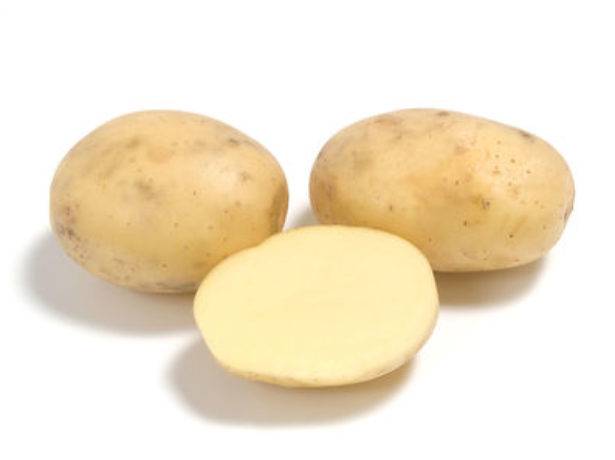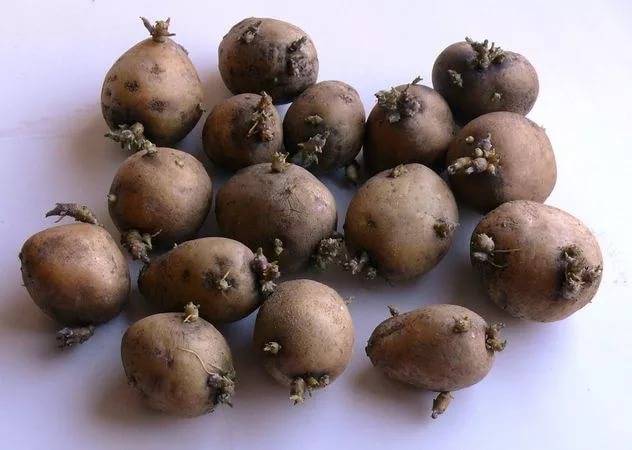Content
In recent years, many vegetable growers have given preference to hybrid potato varieties, when creating which breeders try to take into account all the positive properties of an ordinary vegetable. Colombo potatoes are especially popular.
This table variety has excellent characteristics, thanks to which it is planted both on large plantations and in summer cottages.
Description of the variety
The Colomba variety was bred in Holland and has been successfully grown in Finland for a long time. In Russia, it is popular in regions with warm and temperate climates:
- central regions of Russia;
- in the North Caucasus;
- in Ukraine;
- in the north-west of the country;
- in the Volga region.
Colombo potatoes, as Russian gardeners mistakenly call them, are intended for planting in open ground. The height of the semi-spreading bushes reaches a little more than 0.5 m, the color of the leaves is green with an emerald tint. When flowering, wonderful snow-white flowers with a delicate purple tint are formed.
Colombo potato fruits are distinguished by their uniform size and rounded shape. Their weight averages about 100 g, starch - 11-15%. The thin peel and pulp are yellowish in color.
Positive properties
Description of the Colombo potato variety, photos, reviews indicate its excellent qualities:
- delicate, soft taste, thanks to which a lot of different dishes can be prepared from potatoes;
- excellent presentation, which ensures high sales volumes;
- early ripening - the Colombo potato harvest can be obtained in 2-2.5 months, and in warm climates it produces two harvests per season;
- high yield - under favorable conditions it can reach 40 tons per 1 ha;
- unpretentiousness - Colombo potatoes do not require labor-intensive care;
- resistance during dry seasons;
- high resistance to common pathologies.
Potato agricultural technology
The Colombo potato variety is simple in agricultural technology, but it has its own characteristics, knowledge of which will help to achieve high yields.
Site selection
Colombo potatoes grow well on chernozem or sandy loam soils, light loams. Drained peatlands are also suitable for cultivation if their acidity does not exceed 5-7. Acidic soils need to be limed several months before planting. For liming, the soil is often dug up with dolomite flour, observing the required norm, otherwise scab may occur. You can reduce acidity by adding ash.
Good predecessors of Colombo potatoes, according to reviews from those who planted them, are crops such as cabbage, pumpkin, beans, and peas. You cannot grow it in areas where grains and tomatoes grew. Potatoes grow poorly even in virgin soil.
One of the main factors when choosing a site for the Colombo variety should be the degree of illumination - the soil should warm up well.On clay or marshy soils for planting potatoes, you need to prepare high beds in the fall. They will warm up in early spring, which will allow you to plant it earlier and get a good harvest.
Planting in a box
In small areas, a new method of planting Colombo potatoes is becoming popular. The characteristics of the method highlight its advantages:
- there is no need to dig up the entire area every year;
- fertilizer costs are reduced;
- the labor intensity of caring for potatoes is reduced, since weeding the beds is easier;
- It is also important that the beds look neater;
- The method is especially convenient when it is necessary to propagate an expensive elite variety.
The essence of the method is to plant Colombo potatoes in box beds. By preparing about two dozen of these boxes, you can provide your family with a potato harvest for the whole summer. The technology for their manufacture is simple and does not require professional skills:
- boards, pre-impregnated with an antiseptic, are knocked together into tall boxes without a bottom;
- they are placed in beds and filled with fertile soil;
- potatoes are planted in them;
- We must remember that high beds require more frequent watering.
Germination of tubers
About a month before planting Colombo potatoes, the description of the variety recommends sprouting. The tubers are laid out in a bright place at a temperature of approximately +15 degrees. If the air in the room is too dry, the tubers should be periodically sprinkled with water. Gradually, plump sprouts will begin to appear from the eyes.
Medium Colombo tubers are planted whole, while large ones can be cut into two or four parts. However, each piece should have at least 2-3 sprouts. The cut areas are disinfected by sprinkling with wood ash. After this, they are placed in a dry place to dry the sections.
Well preparation
To plant Colombo potatoes, reviews from summer residents recommend preparing holes in advance. The optimal depth for them is 10-15 cm, depending on the purpose of planting. If you want the potatoes to germinate faster, then you shouldn’t bury them too deep. The holes are placed at the rate of 3 holes per 1 m, and the row spacing should be increased to 0.7 m. This distance will provide the Colombo bushes with sufficient space for lighting and tuberization. It’s good to add a handful of ash and humus to the holes. Under no circumstances should you add fresh manure to them.
Planting potatoes
Reviews from gardeners advise planting the Colombo potato variety only in warm soil. Cold soil will slow down its germination or may even cause the tubers to rot, especially with high humidity. Usually, during the flowering period of dandelions, the soil has already warmed up to 10 degrees per day. potato planting depth. In order to speed up this process, you can cover the beds with film or agrofibre immediately after the snow melts. The ground underneath will warm up in a few days.
The tubers are laid out in holes and covered with a layer of earth. For clay soils, its thickness should not exceed 5 cm, and for light soils it can reach 8 cm. After planting, the potatoes must again be covered with agrofibre. It will help speed up the germination of tubers and protect the sprouts from recurrent frosts.
Care
According to the characteristics of the variety and reviews, Colombo potatoes should be hilled and harrowed on time. The first hilling is carried out after the emergence of shoots up to 15 cm high. Hilling promotes the formation of more tubers, so it is advisable to carry it out every two weeks. If there is a threat of return frosts, already sprouted bushes can be protected by hilling them to the very top.
In the absence of rain, Colombo potatoes require regular watering, especially during flowering. After each watering or the next rain, loosening should be done to increase the access of oxygen to the roots.
Resistance to pests
The Colombo potato variety has good resistance to pathogens such as golden nematode. It also shows high resistance to cancer. Since the variety is early, late blight does not have time to infect the potatoes. But if planting is repeated, then it is better to carry out preventive treatment of the bushes.
By observing crop rotation, you can protect potatoes from infection. The Colorado potato beetle is as dangerous for it as for other varieties. It is necessary to periodically check the bushes for the presence of pests in order to promptly treat the bushes with fungicides. You can fight the Colorado potato beetle with the help of green manure. Lupine is an excellent remedy against beetles, and mustard effectively fights wireworms. At the same time, green manure is an excellent top dressing.
Reviews from gardeners
Both experienced vegetable growers and novice gardeners are unanimous in assessing the taste of Colombo potatoes and give them only positive characteristics.
Conclusion
Colombo potatoes successfully combine a lot of positive qualities. Although the variety is new, it has already received excellent characteristics. By following simple agricultural techniques, you can reap excellent harvests from small plots.





















